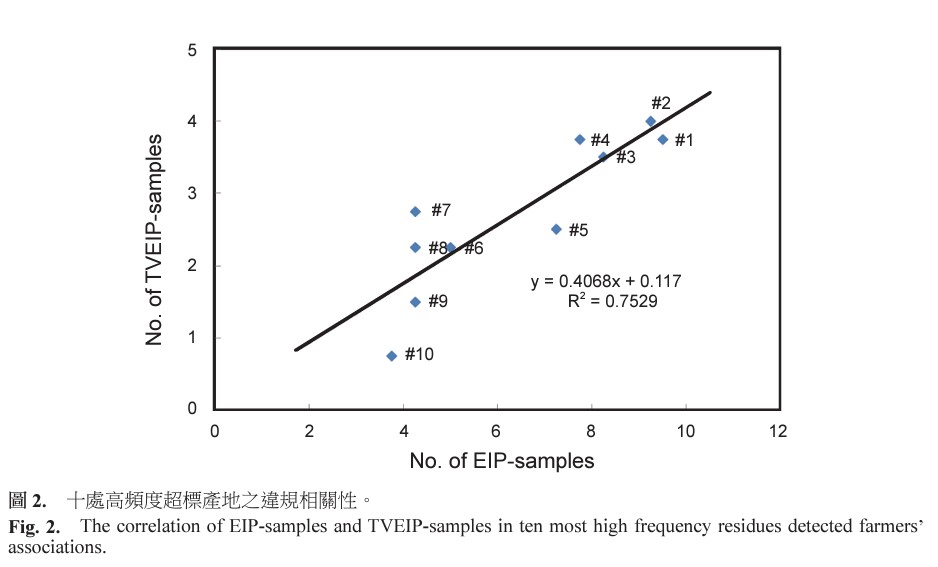All issues

Author:Edward Yun Cheng, Yu-Bing Huang, Ming-Yao Chiang*, Yi-Hsuan Hou, and Chun-Chi Nien
Abstract:
The pesticide residue problem on fruits and vegetables in the Taipei City wholesale market was investigated by both Acetylcholinesterase inhibition screening and the regulatory chemical residue analysis from 2009 to 2012. A total of 223,135 samples were screened and 554 samples were found with more than 45% inhibition on AChE activity (the enzyme inhibition positive; EIP), i.e., an indication of presences of neurotoxic pesticide residue, including organophosphate and/or carbamate. In chemical analysis through GC/MS, HPLC, and TLC, 95.1% of the EIP-samples were confirmed with the causing pesticide identities. In average, each EIP-sample contained 3.30 pesticides with an insecticide to fungicide ratio of 2 : 1, and a combined pesticide titer of 1.91 mg L-1. Among the EIPsamples, 259 (46.9%) samples violated the tolerance regulation (TV) with average of 4.11 pesticides and combined titer of 3.15 mg L-1 for each TVEIP-sample. Since the practice of mixing several pesticides in spray has been confirmed in this study, the attention is then focused on the Common Mechanism Group (CMG) problem or the cumulative toxicity. The combined frequency of organophosphate and carbamate presence in 554 EIP-samples was 792 and the average was 1.41 per sample. Thus, the CMG problem is obvious in these neurotoxic anticholinergic pesticides. The safety judgment by the individual organophosphate and carbamate pesticide tolerance will underestimate the danger of their combined residues. The highest frequencies detected for anticholinergic pesticides were chlorpyrifos (53.3%), profenofos (23.8%), carbofuran (19.5%), etc. High residue risk vegetable and fruit production farmer organizations were identified in the study, a total of 254 EIP-samples (45.9%) came from only ten farmers’ associations. Among them, there were 108 tolerance violations (41.7%), the correlation between the EIP cases and TVEIP cases in those ten farmers’ association is positive (R2 = 0.752). The pesticides mixing pattern are similar in these adjacent production organizations, and can be used as a tool to trace the origin of residue contaminated farm products with unknown sources. The residue analysis results of 2009–2012 were similar in all aspects with no significant differences between years. The AChE/Chemical combined analysis for pesticide residues control has been a regular practice in Taipei City since 1985. Its purpose is to intercept by rapid enzyme toxicity test. The residues contaminated vegetables and fruits before it have been sold to consumers. From 2009 to 2012, a total of 37,278 kg of residues contaminated vegetables and fruits were taken off from the market and destroyed to protect the consumers.
Key words:Pesticide, Residues, Fruits and Vegetables, Acetylcholinesterase
Download:![]() PDF Links
PDF Links
- 1. Development of Tractor-Mounted Seedling Transplanter for Sweet Potato
- 2. Synergistic Effect of Additional Gas on the Toxicity of Phosphine to Sitophilus oryzae and Sitophilus zeamais (Coleoptera: Dryophthoridae)
- 3. Effects of Temperature and Solar Radiation on Growth Traits and Plant Elements in Purple Leafy Sweet Potato
 Submit your manuscript
Submit your manuscript
 Guide for authors
Guide for authors